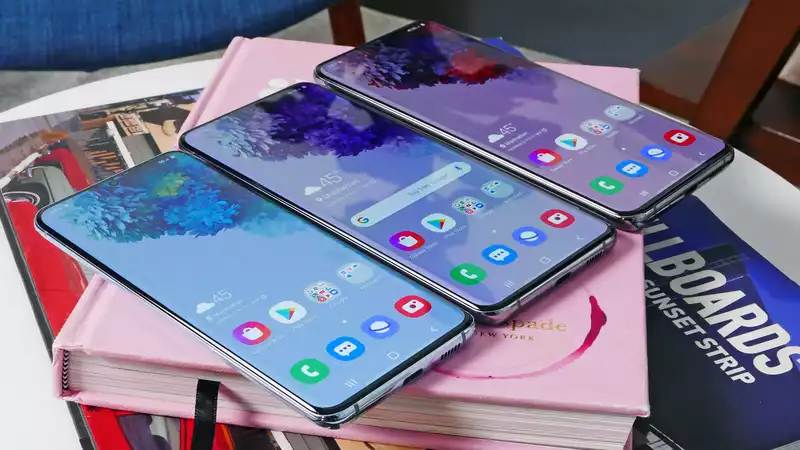The Samsung Galaxy S20 is not yet available, but those lucky enough to get their hands on Samsung's upcoming flagship model have a common complaint. The 120Hz Dynamic AMOLED display, which is supposed to set a new standard for smartphone screens, comes with a frustrating compromise.
Yes, the Galaxy S20, Galaxy S20 Plus, and Galaxy S20 Ultra can all display content at 120Hz, providing twice as smooth animations as conventional displays. However, this refresh rate and the maximum native resolution of 3200x1440 cannot be used simultaneously.
If 120 Hz is desired, detail must be reduced to Full HD. This means that text and graphics will appear more blurry than they should. Also, these screens are quite large, so you will probably notice the difference from Quad HD, especially if you choose the huge 6.9-inch S20 Ultra.
Of course, Samsung made the decision to protect battery life, forcing users to choose between refresh rate or image quality. But that is a decision that should be left to the individual who spends up to $1,400 on these smartphones. Thankfully, according to rumors frequently circulated on Twitter by Samsung leaker Ice Universe, the company will address this issue in a post-release update, allowing users to choose a 120Hz, Quad HD resolution as they please and use more and more of their precious battery life. They will be able to play with less and less of their precious battery life.
The screenshots included in the tweet show three options: "High" (always 120Hz), "Dynamic" (automatically switches between 60Hz and 120Hz, saving battery life as needed), and "Standard" (always 60Hz). The aforementioned 120Hz, Quad HD options are not shown here, but Ice Universe indicates that such options are "selectable."
After all, 120Hz all the time is probably overkill, so it would be nice to see dynamic settings; even the Pixel 4, which offers a 90Hz panel, does not offer that option, and you'd have to head to Android's developer menu to enforce it indefinitely. That said, it's a bit surprising that Samsung doesn't offer 90Hz as a compromise; the only way to achieve smoother animations on the Galaxy S20 is either 120Hz or 60Hz.
Some have asked whether Galaxy S20 owners really need 120Hz, Quad HD settings, to which I would argue that no one really needs these things. For less than half the price of the cheapest Galaxy S20, you can get a Pixel 3a with a 60Hz screen with full HD resolution and a processor that is fast enough for most things but slow when taking pictures or playing games. If you're eyeing the Galaxy S20, you're already cheating excessively.
But at the end of the day, if Samsung is not comfortable with the energy consumption impact of running a Quad HD panel at 120Hz, they should not have increased the refresh rate. Or it should have stopped at 90 Hz instead of 120 Hz. Or they should have replaced the Quad HD screen with a Full HD screen. There is a good reason these phones are expensive. If we can accept that, then we can also give those who are fortunate enough to be able to afford them the freedom to make their own decisions.
So I commend Samsung for clearly rethinking its philosophy regarding the S20's display. Since the inception of Google's mobile operating system, the advantage of buying the best Android phone versus an iPhone in the same class has always been choice. More choices are always welcome. It will be a while before we know if this update is real, but Ice Universe's tweet at least gives prospective S20 buyers something to look forward to.










Comments